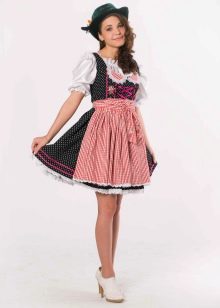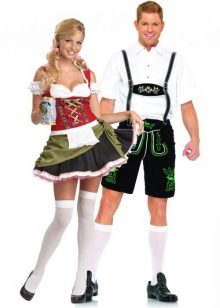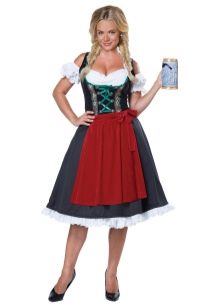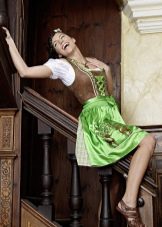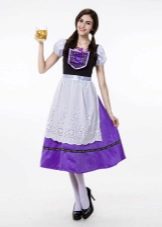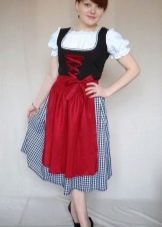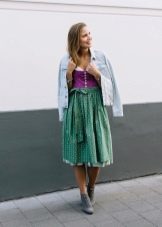German national costume
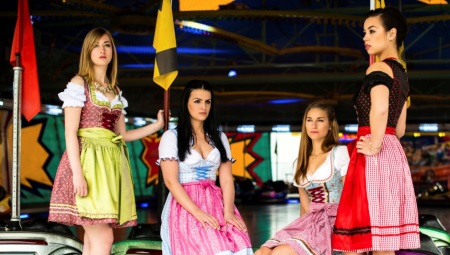
Historical facts
Each country boasts an original national dress. The Scots show off plaid skirts, the Japanese still appear on the streets in kimonos. Germany is no exception! A state with such a rich, eventful history simply could not stand aside.
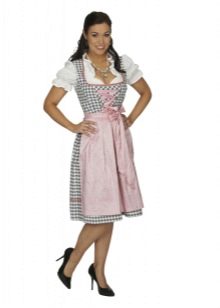
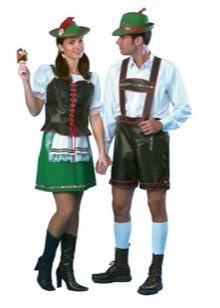
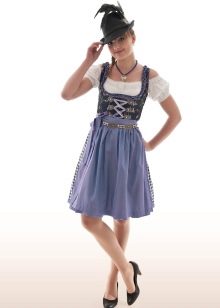
If a modern person hears about the national costume of Germany, a clear picture will immediately appear in his imagination. The traditional outfit of the Germans is the easiest to recognize, and all thanks to the festivals that are often held around the world. The costume has absorbed every distinctive feature of German culture.
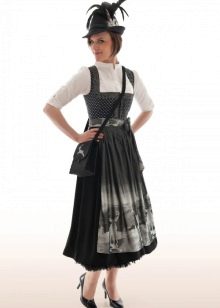
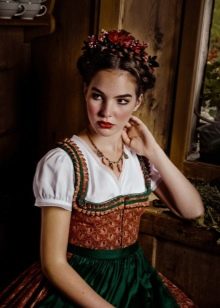
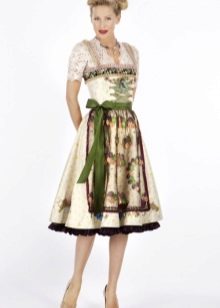
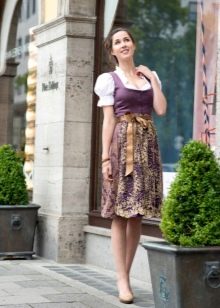
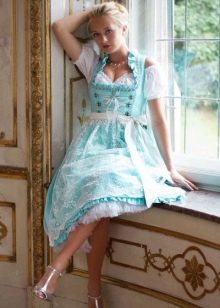
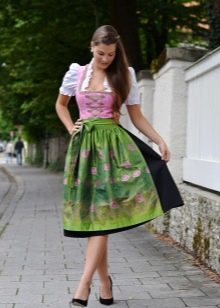
The history of creating a national costume began in ancient times, back in the days of primitive society. The territory of present-day Germany could provide the settlers with animal skins, from which people could hardly make warm caftans. This is not a traditional outfit, but it was then that the culture of the Germans was born. There was nothing aesthetic in the ancient dress - it was only necessary to provide oneself with warmth and protection from small insects.
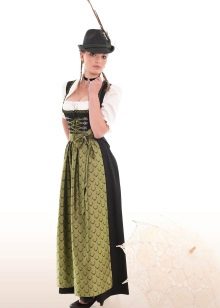

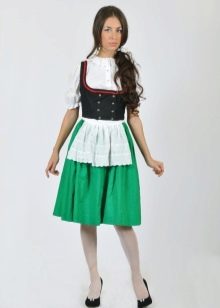
Stages of development
At the initial stages of the formation of the national German costume, the huge influence of Rome affected. Representatives of the German nation constantly appeared in the territory belonging to the great empire, and the attire of the indigenous people attracted them. Having studied the details of the outfit, the Germans happily began to exploit many elements of the Roman costume.
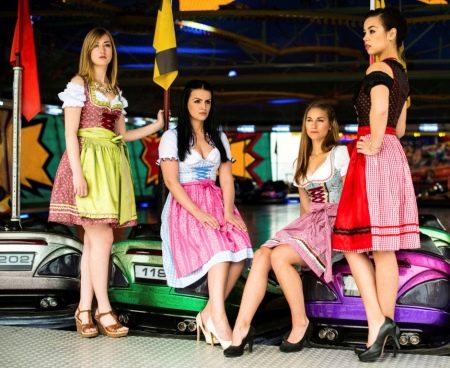
During the Renaissance, the outfit of the Germans took a different path. Clothing has undergone dramatic changes to achieve the look that is so familiar to the person of the twenty-first century.
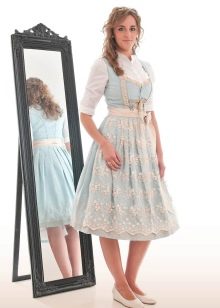
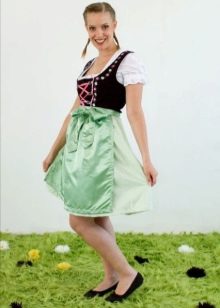
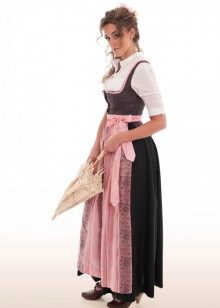
In each region of the country, the costume had some differences:
- The Germans, who had a great fortune, dressed in outfits made of expensive fabrics - the priority was flax, wool, velvet, walk.
- People with low incomes were not allowed to wear beautiful clothes by law. They limited themselves to homemade costumes. The cheapest materials were used to create them. The shades of clothing could not boast of variety - only gray and brown were allowed.
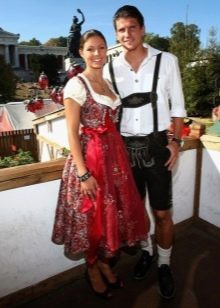
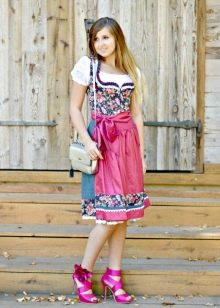
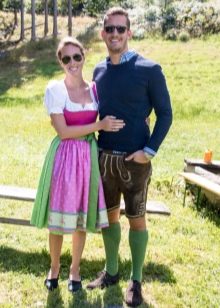
Specificity
The national dress of the people of Germany was created depending on the geographical features of the area. The rather warm climate of the country allowed the Germans not to wrap themselves in furs, fleeing the cold.

The landscape also contributed:
- People living in mountainous areas were more exposed to the chilly wind, so only thick cloth was used for sewing clothes.
- The foothill area was pleasing with dryness, precipitation was extremely rare, so the Germans made shoes from oats or straw.
- The coastal region, on the other hand, tormented residents with a high level of humidity. People wore leather goods, and shoes could even be made of wooden materials.
- On the plains, the Germans wore an attire made of linen.
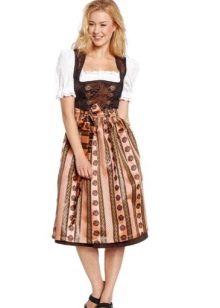

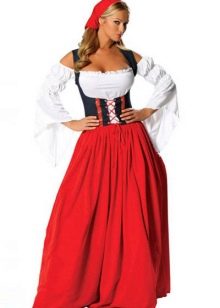
The look of the traditional costume of Germany depends not only on the climate. Influenced by the character of the Germans. Unlike most other peoples, the Germanic nation has never been distinguished by a particular desire for luxury. The attractiveness of clothing for them was in moderate severity and accuracy. Of course, the Germans did not deny themselves decorative elements, embroidery and lace, however, jewelry was not considered the main thing.
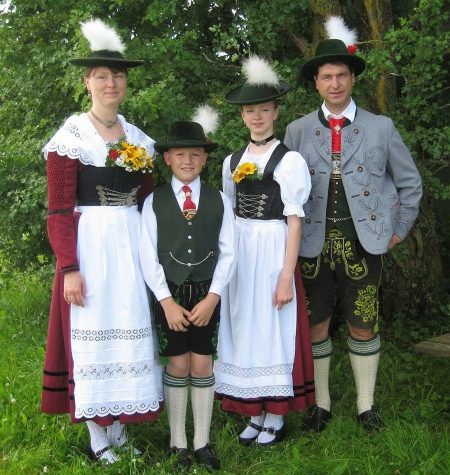
Variety of shades and patterns
The most common color scheme for a suit in Germany was blue and gray. Clothes made in deep blue shades were worn by Germans and Germans on special occasions, going to any festive event. Most families could also afford a blue outfit every Sunday.
The rich appeared in public in clothes with a predominant red and green color.
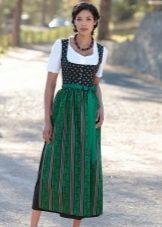
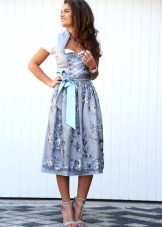
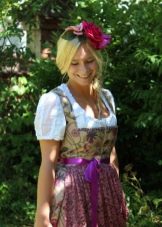
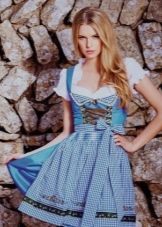
For the peasant costume, brown shades were most often used. Their attire was aimed solely at practicality - no traces of dust and dirt can be seen on dull fabric.
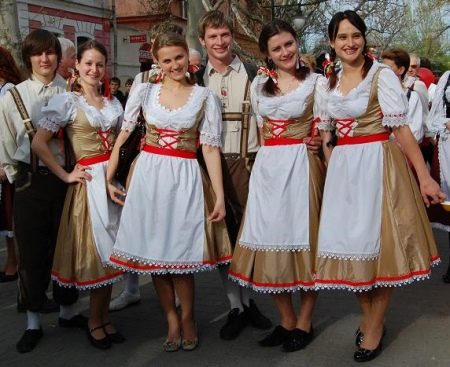
Ornaments on national costumes looked amazing. The needlewomen put all their talent in creating wonderful patterns. Most of the clothes were decorated with embroidery and fabric appliqués of natural and plant orientation, the girls were very fond of floral motifs. The costume of families with a great pedigree was also distinguished by embroidered heraldry.
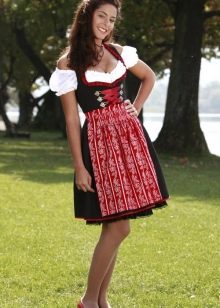
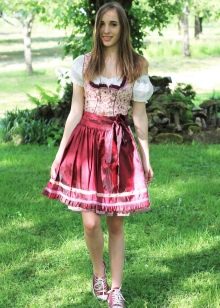
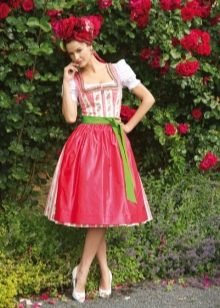
Style
The national costume of the German people has an excellent property - it does not need to be carefully looked after. This quality was of great importance, because not everyone could afford to update their wardrobe every month. One set of clothes served the German faithfully for a long time, while not parting with a presentable uniform. The cut of the traditional costume was delighted with its reliability.
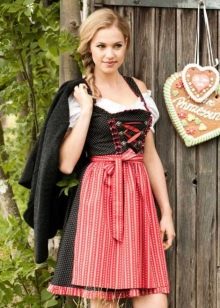
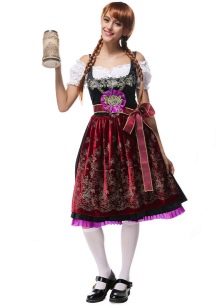
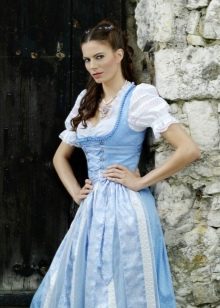
The style was free, the movement of people was not constrained. The wide sleeve and the same large armhole made the clothes as comfortable and easy to wear as possible. The stitches did not chafe sensitive skin.
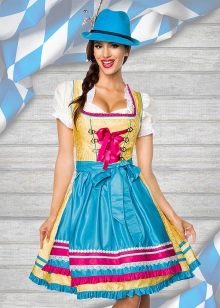
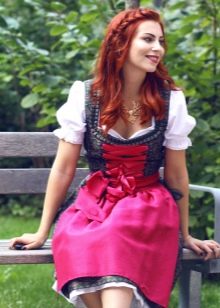
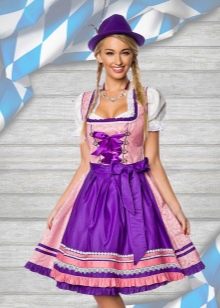
Women's national dress
The traditional costume for girls, which received the interesting name "dindrl", was initially worn only by maids. However, after a short time, someone saw the beauty of this outfit, and not a single German woman could imagine herself without a dindrl.

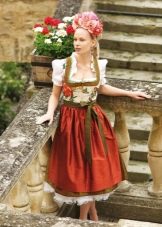
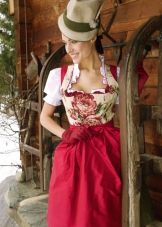
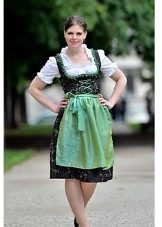
It was a snow-white blouse, emphasizing the femininity and grace of a German woman, and an attractive sundress, which included a lace-up corset and a long skirt with many folds. The corset skillfully highlighted the natural beauty of the breast.
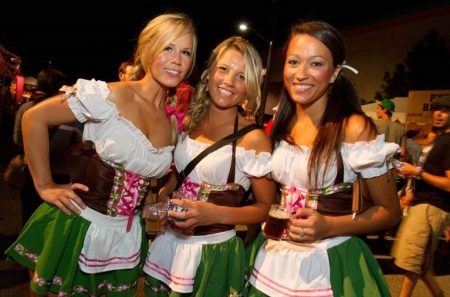
In the wardrobe of a German girl, there was always an elegant dindle, necessary in case of solemn events and festivities. It differed from the usual version with a wide sleeve and a brighter apron.
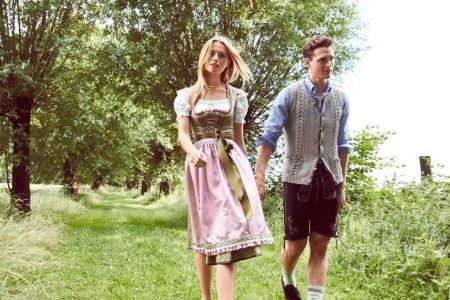
The national German apron can be recognized by its stripe patterns, but there are also solid colors. The apron had one detail that could tell a lot about a woman. If the bow was tied on the right, this meant that the girl was married, and on the left was a German woman in search of a relationship. Women grieving for their deceased husband tied a bow in the middle.
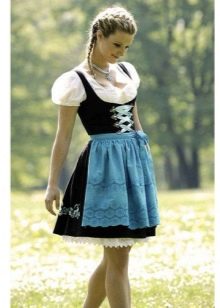
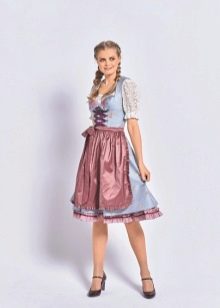
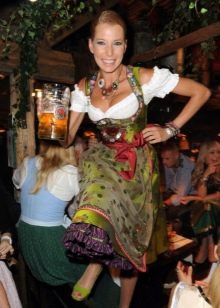
Men's suit
Germans love order in everything, including their clothes. What is a traditional German outfit made of?
- As usual, the men's national costume included a vest, jacket and trousers. Instead of trousers, the Germans often replaced them with leather trousers, creating a harsh image of a self-confident person. Bloomers were no less popular.
- Pants were combined with low stockings of blue and other light shades.
- Men loved to use suspenders and belts.
- Every German possessed a hunting knife. In order not to carry it in their hands, they came up with a spacious pocket to sew on the pants.
- If a person had a serious meeting, he would wear an elegant double-breasted coat.
- Ties were used as men's accessories, and the main attribute was a traditional headdress - a green hat with a large feather.
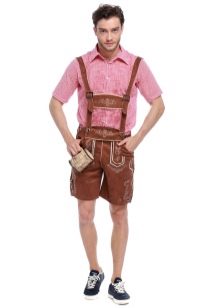
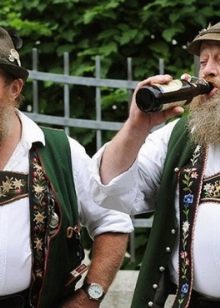
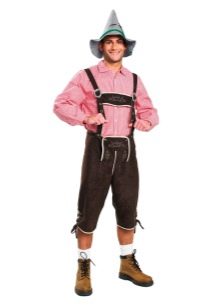
Children's option
The Germans gladly dressed the children in national costumes. An outfit for girls taught them fragility and tenderness from childhood - the little ones walked in miniature dresses, sundresses and aprons. The boys wore breeches with suspenders, white shirts with vests, and boots.
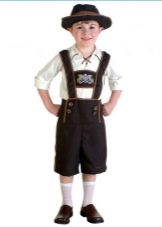
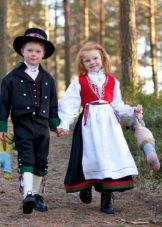
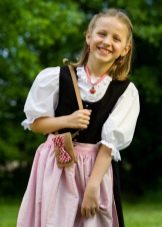
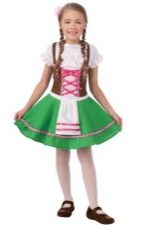
Gorgeous wedding dress
The wedding ceremony means a lot to the German people. Families of both sides began to prepare for the wedding long ago, but the bride's parents were especially fussing about. The desire to prepare the most beautiful dress for her daughter is quite natural, and even the poor layers of the population have always coped with this task.
The national costume was decorated with delightful embroidery. Embroidered symbols promised the newlyweds the comfort of home and devotion to each other until the end of their days. The style of the wedding dress emphasized the beauty of the figure - the beckoning curve of the waist and the bust.

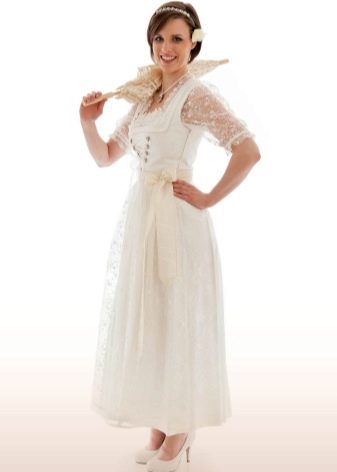
The bride was holding a lush bouquet of flowers in her hands. The Germans did not throw it to their girlfriends - they kept the bouquet forever, dried the flowers. A wedding dress for women still delights fashion designers.
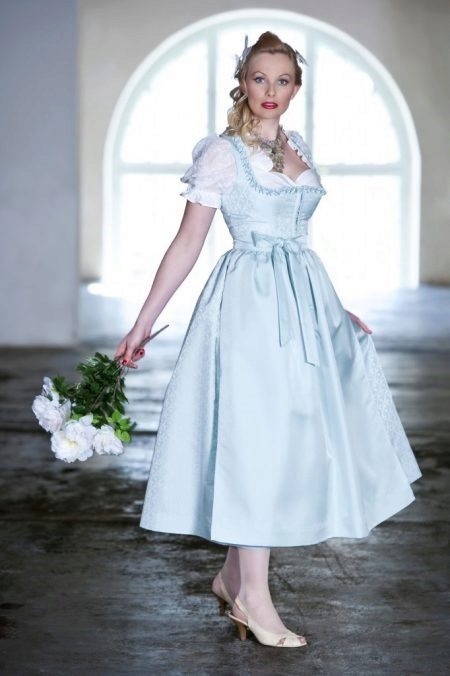
Meeting of modernity and tradition
Nowadays, the national German costume is worn with pleasure by girls and men in Bavaria. It is believed that there is no person more stylish than the one who is dressed in traditional German clothes. The cost of the outfits is high and can seriously hurt family finances.
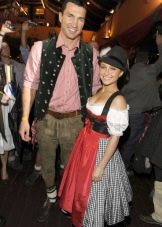
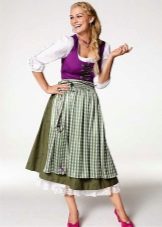
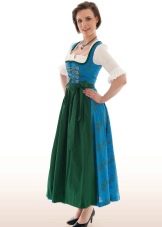
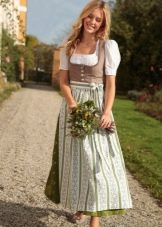
Of course, there were some modifications. Previously, German women wore long skirts - their hem did not even reach knee level. Now girls can afford mini-skirts, but basically the canon has been preserved - the Bavarian Fraulein do not allow themselves to be promiscuous.
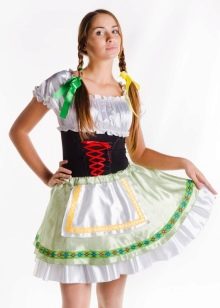
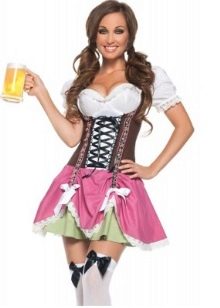
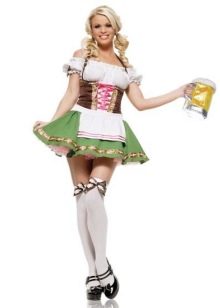
Reviews
The German national costume instantly attracts attention. The reviews from the owners of traditional garments are extremely positive. They admire the comfort of the outfit - it is created by their soft, body-friendly materials, the skin always has access to oxygen.
